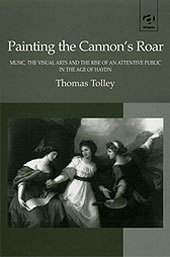Painting the Cannon's Roar Music, the Visual Arts and the Rise of an Attentive Public in the Age of Haydn
Auteur : Tolley Thomas

Contents: Introduction: Painting and music at the crossroads: The Middle Ages and Renaissance; Newton’s Opticks; Harmony for ear and eye; The crossroads; Popularity, music and the visual arts: An international language; Musical biography: Carpani exploding the cannon; Vox Populi; Steps to Parnassus: ’How eye and ear are entranced’: Haydn and Esterházy patronage; Artaria & Compagnie: dealers in prints and music; Haydn and Goya; Talking pictures and moving images: the discourse on the visual arts in 18th-century opera: Sacrificing Iphigenia: Algarotti, Tiepolo and Vanloo; Gluck and the visual arts; Painting the cannon’s roar; Musical icons and the cult of Haydn: A public image; Updating the image; The reluctant sitter; Age and youth; The cult of Haydn; Physiognomy, phrenology and Frankenstein; Hero; Developing tastes: The culture of looking in England in the early 1790s: A visual education: Haydn as collector; A popular collection; Looking and listening in London; ’Picture after picture’: The Creation and The Seasons: Creating waves; ’Pictures for the ear’; Motion and the dynamics of light; Observing nature; Moving pictures; ’Last Judgement’: Evolutionary ends; Still courting popularity; Beyond the crossroads; Appendix: Haydn’s collection; Bibliography; Index.
Date de parution : 08-2001
15.6x23.4 cm
Date de parution : 11-2016
15.6x23.4 cm
Thème de Painting the Cannon's Roar :
Mots-clés :
Van Swieten; van; Haydn’s Music; swieten; Late Oratorios; bis; Younger Man; music; Allgemeine Musikalische Zeitung; haydn's; Vice Versa; musical; Mrs Jordan; icons; Carlos III; death; Gluck’s Opera; late; Le Haydine; oratorios; Haydn’s Opera; George III; Chopin; Mrs Papendiek; Thomson’s Poem; Hop Field; Herschel’s Telescopes; Phonurgia Nova; Tempore Belli; Les Horaces; Haydn’s Setting; Salon Exhibitions; Haydn’s Works; Valentine Green; La Resurrezione



